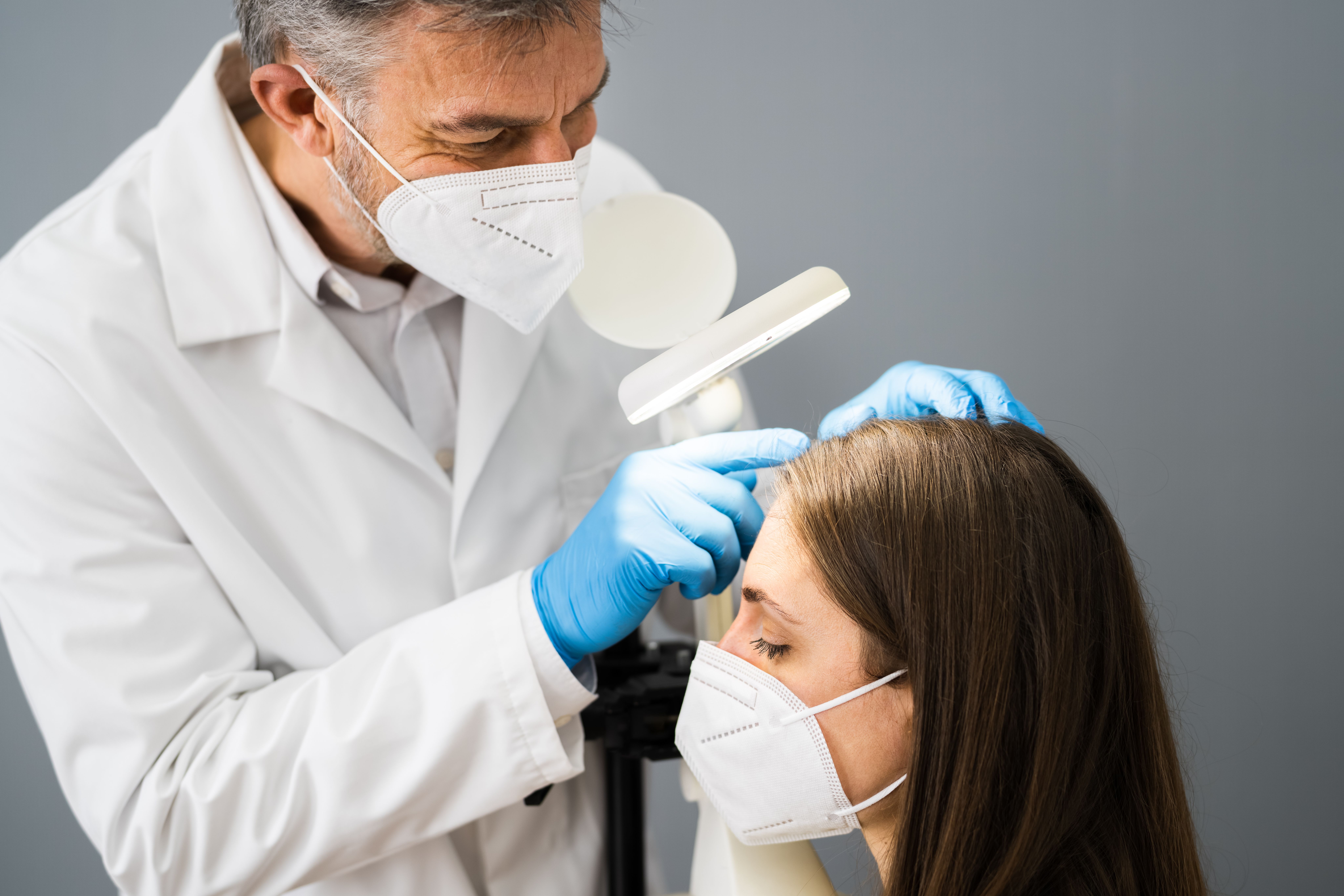- Center on Health Equity & Access
- Clinical
- Health Care Cost
- Health Care Delivery
- Insurance
- Policy
- Technology
- Value-Based Care
Study Finds No Link Between COVID-19 Vaccine, Alopecia Areata
A study in San Bernardino County found no increased risks of alopecia areata (AA) after the COVID-19 vaccination but suggests further research into potential geographic and gender-based factors.
Dermatologist checks patient's scalp, wearing surgical masks | Image Credit: Andrey Popov - stock.adobe.com

There were no identifiable incidences of alopecia areata (AA) among the vaccinated population compared with the unvaccinated population, but further investigation must be completed based on geographic and gender-based areas.
A large, single-center, retrospective cohort study utilized electronic health records and publicly available vaccination data from a hospital in San Bernardino County, California, at Arrowhead Regional Medical Center (ARMC).
Patient demographics included age, sex, and race. More vaccinated men participated in the study compared with vaccinated women (n = 21 vs 16, respectively). Participants were more likely to be between 18 to 49 years old and of Latino descent.
The study focused on San Bernardino because it is the largest geographic county in the US, with a diverse population of 2.2 million people. In 2018, census data reported racial demographics were 52.3% Latino, 29.8% White, and 8% African American. Public data from the San Bernardino County COVID-19 Vaccination Program identified 1,396,420 vaccinated patients with 572,291 Latino, 785,283 non-Latino, and 38,846 an unknown race.
Research focused on vaccinated and unvaccinated patients who reported AA incidence shortly after receiving either BNT162b2 (Pfizer), mRNA-1273 (Moderna), or Ad26.COV2.S (Johnson & Johnson).
Results found 73 reports of AA from December 17, 2020, to February 10, 2023, with 36 who received no COVID-19 vaccination before diagnosis of AA and 37 who were either partially or fully vaccinated. An estimated 0.0052% of the study population expressed AA incidence with the probability lower in the vaccinated group overall (OR, 0.58; P = .02).
Vaccinated females had the lowest risk of AA (OR, 0.32; P < .05), supporting the study’s claim of no significant statistics.
The study was limited by the retrospective design because it could have influenced selection bias, limited the data comprehension, and affected the overall generalizability of results. The sample size also limited the study’s power to identify subtle associations. Outcomes may have been altered by external factors, such as comorbidities, variability, and individual responses to vaccines.
Serious, global, public health threats stemmed and continue to stem from the COVID-19 outbreak. Cases of pustular psoriasis, another autoimmune disorder like AA, were reported in multiple individuals shortly after receiving the vaccine. The study concluded additional investigations based on gender and geographic region rather than the COVID-19 vaccine should be explored.
Reference
Chen J, Cano-Besquet S, Ghantarchyan H, Neeki MM. The incidence of alopecia areata in a COVID-19-vaccinated population: A single-center review. Cureus. 2023;15(12):e50133. doi:10.7759/cureus.50133
The Breakdown: Breast Cancer Research Awareness Day
August 19th 2025Breast cancer is the second most common cancer among women and the second leading cause of cancer-related deaths among women in the US. In light of Breast Cancer Research Awareness Day, The American Journal of Managed Care® breaks down the most recent advancements in breast cancer prevention, screening, and therapies.
Listen
